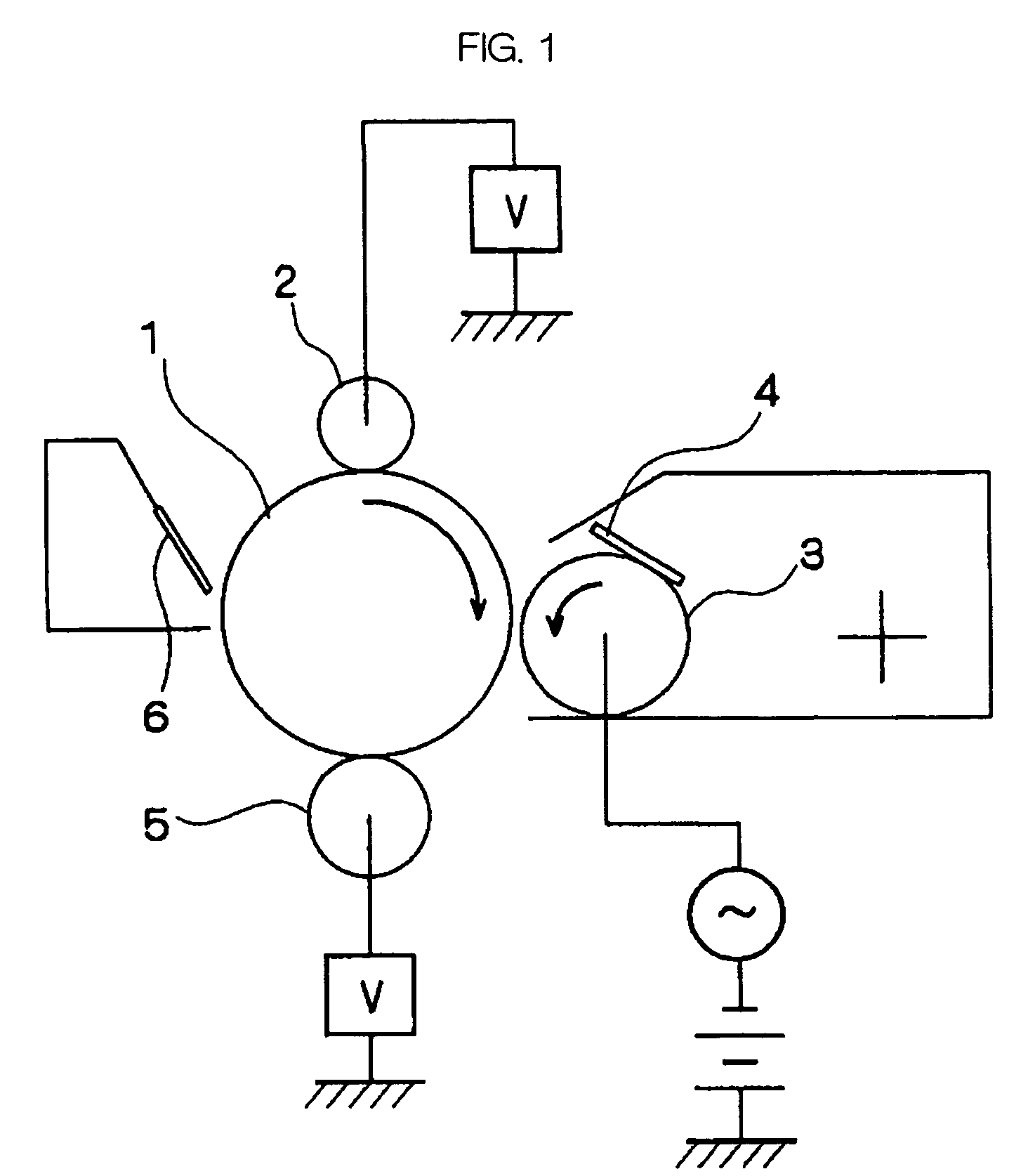Toner for developing electrostatic latent images, production method thereof, and electrostatic latent image developer using the same
a technology for latent images and toners, applied in the field of toners for developing electrostatic latent images, production methods thereof, and electrostatic latent image developers, can solve the problems of inability to deliberately control the shape and surface structure of intended toners, and the need for a reduction in the size of toner particles in the conventional process, etc., to achieve reliable production, favorable surface properties, and desirable particle shape
- Summary
- Abstract
- Description
- Claims
- Application Information
AI Technical Summary
Benefits of technology
Problems solved by technology
Method used
Image
Examples
example 1
Preparation of Toner Particles A
[0170]Resin particle dispersion A: 80 parts[0171]Colorant particle dispersion A: 30 parts[0172]Releasing agent particle dispersion B: 30 parts[0173]Polyaluminum chloride: 0.4 part
[0174]The ingredients above are placed in a round-bottom stainless steel flask and mixed and dispersed by the Ultra-Turrax T50 manufactured by IKA. Then, 0.6 parts of polyaluminum chloride is added, and the mixture is additionally dispersed by the Ultra-Turrax T50. The flask is then heated to 50° C. in a heating oil bath while the mixture is stirred. After the mixture is kept at 50° C. for 60 minutes, 40 parts of the resin particle dispersion A is added gradually.
[0175]After the pH of the mixture is adjusted to 5.5 with 0.5 mol / L aqueous sodium hydroxide solution, the stainless steel flask is sealed tightly and the mixture is heated to 95° C. while continuously stirred with a magnetic stirrer and kept at the same temperature for 5 hours. During the heating, the solution is ad...
example 2
Preparation of Toner Particles B
[0180]Resin particle dispersion B: 80 parts[0181]Colorant particle dispersion B: 30 parts[0182]Releasing agent particle dispersion B: 30 parts
[0183]The dispersions above are placed in a round-bottom stainless steel flask and adjusted to a temperature of 20° C. while stirred. After the pH of the mixture is adjusted to 5 with 0.5 mol / L aqueous sodium hydroxide solution, the mixture is heated to 48° C. in a heating oil bath while continuously stirred with the Ultra-Turrax T50, to give a dispersion containing particles having a volume-average particle diameter of 4 μm. Subsequently, 40 parts of the resin particle dispersion B is added and the pH of mixture is further adjusted to 2.
[0184]Subsequently, the mixture is stirred without temperature adjustment for 2 hours allowing the particles to grow in size, and when the volume-average particle diameter of the particles reaches 6.6 μm, the pH of the mixture is adjusted to 6. The mixture is then reheated to 98...
example 3
Preparation of Toner Particles C
[0188]Toner particles C having a shape factor SF1 of 140, a volume-average particle diameter D50v of 6.5 μm, and a GSDv of 1.22 are prepared in the similar manner to the toner particles A, except that the releasing agent particle dispersion B used in the preparation of toner particles A in Example 1 is replaced with the releasing agent particle dispersion A, and the coalescing temperature and the coalescing time are changed respectively to 98° C. and 5.5 hours.
Preparation of Toner C and Developer C
[0189]A toner C and a developer C are prepared in the similar manner to Example 1 from the toner particles C obtained.
PUM
 Login to View More
Login to View More Abstract
Description
Claims
Application Information
 Login to View More
Login to View More - R&D
- Intellectual Property
- Life Sciences
- Materials
- Tech Scout
- Unparalleled Data Quality
- Higher Quality Content
- 60% Fewer Hallucinations
Browse by: Latest US Patents, China's latest patents, Technical Efficacy Thesaurus, Application Domain, Technology Topic, Popular Technical Reports.
© 2025 PatSnap. All rights reserved.Legal|Privacy policy|Modern Slavery Act Transparency Statement|Sitemap|About US| Contact US: help@patsnap.com

